Shadow Box Fence vs Board on Board Fence: What to Choose?
Fences are structures primarily built to create a division among properties and to enclose a private area for security. In today’s time, however, they are also created for aesthetic purposes. They come in various designs ... Read more The post Shadow Box Fence vs Board on Board Fence: What to Choose? appeared first on Arthitectural.
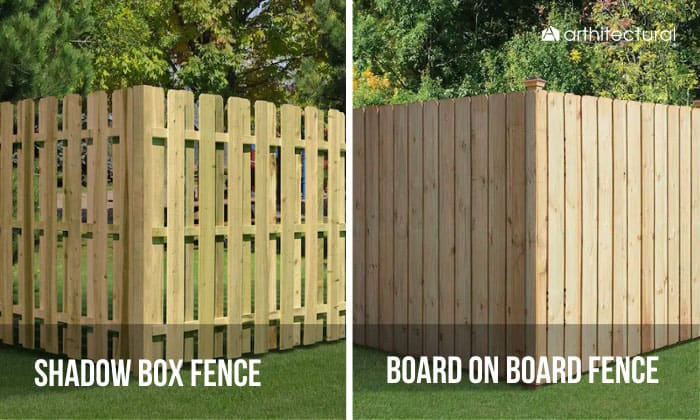

Fences are structures primarily built to create a division among properties and to enclose a private area for security. In today’s time, however, they are also created for aesthetic purposes.
They come in various designs and can be made from various materials such as wood, vinyl, iron, or even aluminum. With many options to choose from, it is easier to pick the right one that will fit specific needs.
In this article, we’ll determine the differences between Shadow Box Fence vs. Board on Board Fences to know which one is suitable for your landscaping and housing exterior design needs.
What Are These Fences?
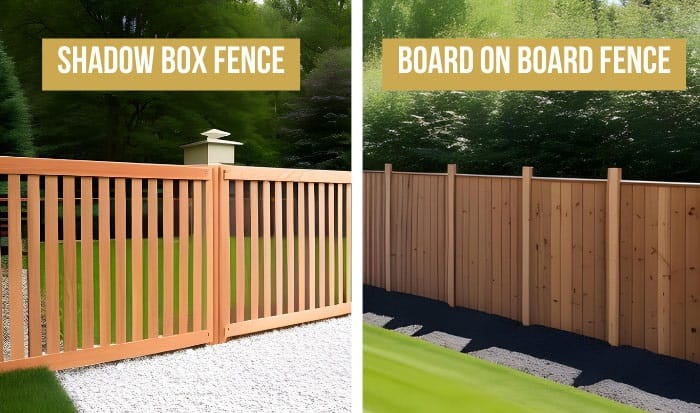
Regardless of fence type, most designs contain common basic components, including fence posts, fence panels or boards, and fence rails. These components can be made from malleable materials to form a specific design.
Fence posts serve as the main support structure, ensuring the stability and durability of the fence. The panels or pickets are what create the visual and functionality of a fence. On the other hand, fence rails hold the fence panels in place.
Board on Board Vs. Shadow Box Fence: Differences
1. Visual appeal
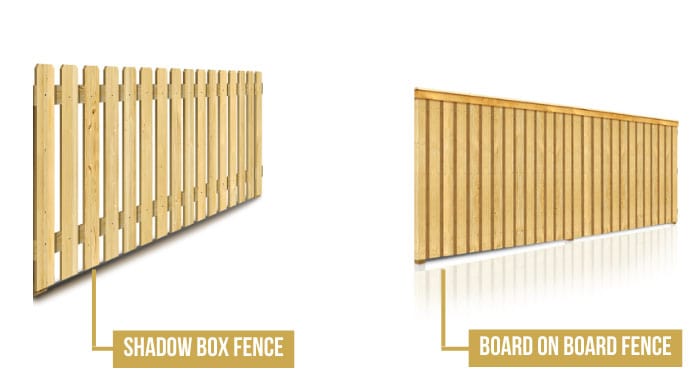
A Shadow Box Fence is a semi-private type of fence often used in residential areas, backyards, and gardens.
The usual ones are made by alternating fence panels vertically on the fence rails’ both sides, which allows some light to pass through.
- The light that passes through creates a shadow, hence the name “shadow box.” It gives the elegant, sharp, and traditional look of wood fencing but gives the benefit of looking the same from either side.
- A variety of this design is the horizontal shadow box fence, where the fence panels are placed horizontally. This gives a unique, captivating, clean, and modern look. It also helps slow the deterioration of fence materials since it is less exposed to the weather.
- Other styles for a shadow box fence include French Gothic, Gothic, flat top, and dog ear.
As the name suggests, board on board fence panels overlapping on the same side of a fence rail to create an entirely solid barrier. The overlapping pattern eliminates visible gaps on both sides.
In contrast to a conventional one, the panels in a board-on-board fence are placed with expanding and shrinking in mind. This means picket replacement is not required, as the overlapping design is broad to hide the gaps.
Like the shadow box fence, there is also a board on board horizontal fence. In this variety, the fence panels are horizontally attached to the fence posts giving a more durable and sleek modern-looking barrier.
Furthermore, with this type of fence, both sides are visually appealing, so we can choose either side to face the road.
2. Height
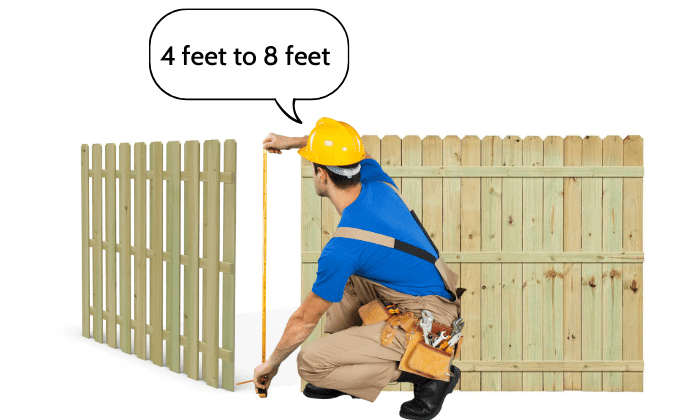
In terms of height, the shadow box fence and the board-on-board fence can range from 4 feet to 8 feet. Since the 4 feet would be considered too low and would not provide that much privacy, most opt for a fence averaging 6 feet.
Like all other aspects, the fence height will depend on personal preference and desired use.
3. Privacy
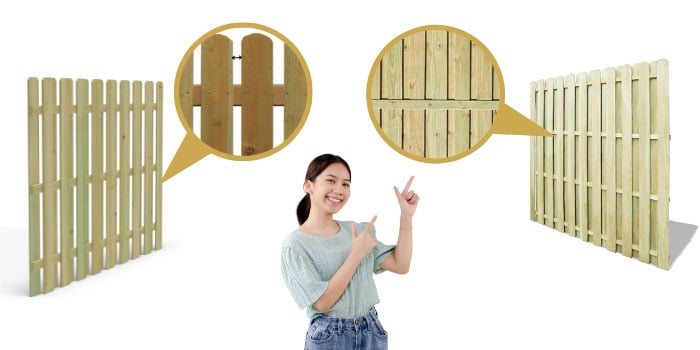
The key benefit of a Board on Board Fence is its enduring privacy. It utilizes the overlapping fence panels to prevent any visible gaps from forming which then results in a more reliable and longer-lasting level of privacy.
While the Shadow Box Fence offers a similar level of privacy from a distance, it does not do the same at a closer look. When peered at closely, the small spacing between the boards will allow a limited view from either end.
4. Durability
A fence offers more than just concealing a property; it also provides long-lasting durability, so long as it is given proper upkeep. The Shadow Box Fence and the Board on Board Fence have long-lasting sturdiness and resistance. 01 Shadow Box
These pieces are sturdy due to the alternating fence panel design. With the even weight distribution between the fence rails, sagging or falling fence panels will be one thing less to worry about.
The distance between the fence panels also minimizes the potential for damage to spread. In a wood fence, for example, when one section deteriorates, the sections next to it are often compromised too.
This can easily be resolved by removing one panel and replacing it with a new one. With such resilience, it can endure insect infestations and changing weather, even for years. 02 Board on Board
For this design, the fence panels overlap and are spaced closely together for added strength and support. It represents remarkable durability making it an excellent option for homeowners.
In addition, this type of fence uses longer fence posts which are set deeper into the ground. This, along with the interconnected design of the fence panels, results in a sturdy and durable structure that will stand the test of time.
Ultimately, the specific durability of either fence will also depend on factors such as the quality of materials used, way of installation, and proper maintenance. Choosing the right wood species for the local weather or vulnerability to insect infestations matters.
5. Cost
Costs for these fences will depend on whether the desired finish level is low-end or high-end. The tables below show the average costs to be incurred:
| Shadow Box Fence | Unit | Low-End | High-End |
| Materials Cost | Per Linear Foot | $9.25 | $14 |
| Labor Cost | Per Hour | $35 | $45 |
| Board on Board Fence | Unit | Low-End | High-End |
| Materials Cost | Per Linear Foot | $10 | $15 |
| Labor Cost | Per Hour | $50 | $70 |
While these costs are the main drivers, there are also other factors to be considered such as length, height, style of the fence, and the landscape of the area.
You can always use a board on board and shadow box fence calculator to get a ballpark.
6. Pros and Cons
Shadow Box Fence
Pros
-
- A visually appealing three-dimensional pattern that is more attractive than regular stockade fencing.
- No front or back side to the fence, thus creating a friendly neighborhood atmosphere
- Spacing between the fence panels provides better airflow and sunlight while also making it less susceptible to strong winds. This helps create a cooler, calmer, and brighter property.
Cons
-
- Requires maintenance, especially wooden ones, which includes refinishing, painting, and staining.
- For property owners whose main concern is privacy, a shadow box fence may not be the best option
Note: To make a shadow box fence more private, opt for taller fence panels, then have them installed vertically instead of horizontally.
Board on Board Fence
Pros
-
- Aesthetic appeal, especially with wooden designs
- Enhanced privacy with the overlapping panels.
- The panels on a board on board fence overlap, so it won’t bear aging issues such as wood warps and sagging. This also means the spacings are hidden and will not be visible with time.
Cons
-
- Building a modern board on board fence requires more materials, labor and construction costs.
- Requires maintenance to prevent deterioration even within just the first year.
Frequently Asked Questions
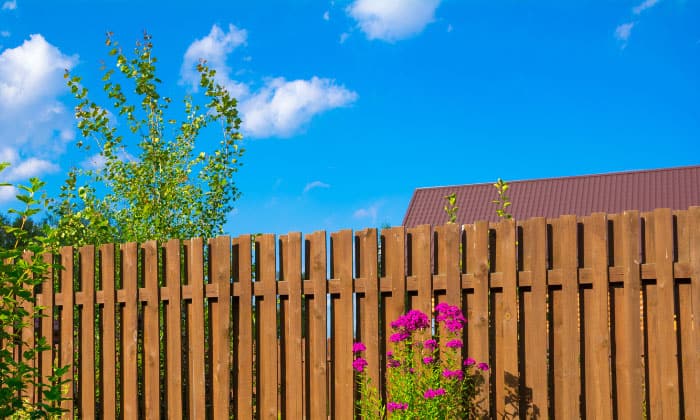
Is Shadow Box Fence more expensive?
A Shadow Box Fence is less expensive as it requires fewer building materials than a Board on Board design.
Is Board on Board the same as Shadow Box Fence?
No, they are not the same due to their different methods of building and designing, and the final output also looks like it is different. The distinct difference between the two is the gaps in the fence panels.
Conclusion
Choosing which type of fence for your property will depend on personal preference, budget, and specific needs. If you are choosing between a Shadow Box Fence vs. Board on Board Fence, remember that materials vary in cost and other factors such as visual appeal and sturdiness.
Either fence has its own set of pros and cons. If you prefer a semi-private type of fence, then opt for the Shadow Box Fence. If you prefer a completely private type, then opt for the Board on Board Fence. Ultimately, you can have it customized to fit your desired outcome.
The post Shadow Box Fence vs Board on Board Fence: What to Choose? appeared first on Arthitectural.
